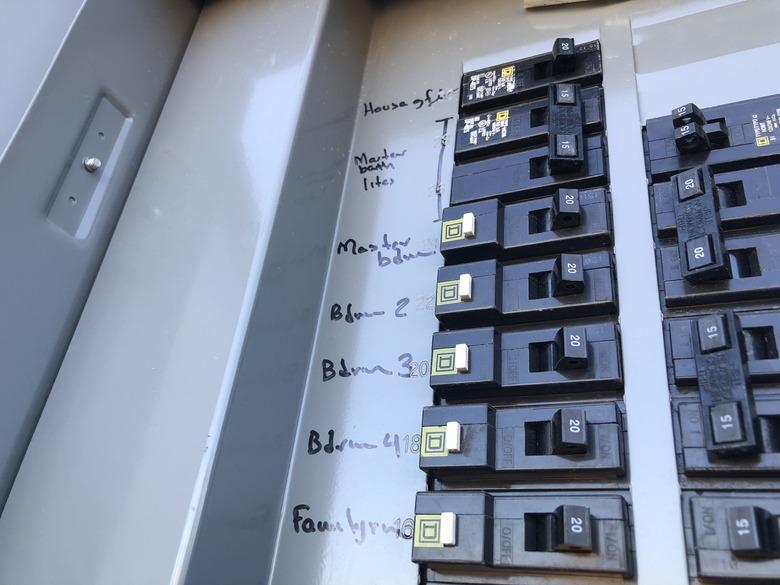How To Find An Open Hot In A House Circuit
We may receive a commission on purchases made from links.
The hot wire in a residential electrical circuit is the one that carries the electrical signal from the panel to each of the electrical devices on the circuit, and the neutral wire is the one that completes the circuit by returning the signal back to the panel. Each circuit has numerous wires, of course, but most electricians visualize the circuit as a single wire loop. When you have an open hot, it means there's a break in the hot wire somewhere along this loop.
Devices connected to the loop before the break won't be affected by it, but all the ones connected after it will lose power. An open hot is usually caused by a bad connection to a switch or outlet, although it could be hidden somewhere in the wall, and if so, you probably won't be able to pinpoint the exact location without an electrician's help. When the problem is due to a bad connection at an outlet or switch — which it usually is — you can definitely find that on your own if you have the right tools.
The Testing Tools You Need
The Testing Tools You Need
Two simple testing tools will make it easy to track down the bad connection causing an open hot.
The first is an outlet tester. This has three prongs and plugs into a conventional 120-volt grounded outlet, and it has a series of lights on it. A legend imprinted on the tester tells you how to interpret the combination of lights that come on when you plug in the tester. When you have an open hot and the outlet doesn't have power, no lights will illuminate.
The second tool you need is a noncontact voltage tester. It can detect the electricity in a live hot wire that may be hidden inside the outlet box and may not be connected. If your plug-in tester doesn't illuminate but the noncontact voltage tester does, you've found the problem outlet. Now, all you have to do is fix it.
A Strategy for Tracking Down an Open Hot
A Strategy for Tracking Down an Open Hot
You're usually alerted to an open hot by the loss of power at an outlet or light switch. That can also be caused by a tripped circuit breaker, so check the breakers and reset any that have tripped. It can also be caused by a tripped GFCI outlet, so go around the house and test all your GFCIs to make sure they are working. If there is an open hot, any GFCI upstream of the break in the circuit won't have power, and you won't be able to reset it (the button won't click and stay in). That's actually a helpful clue. Check that outlet with the noncontact voltage tester because it may be where the problem is.
Once you're sure no tripped breaker or GFCI is preventing power from flowing, test outlets close to the nonworking device with the plug-in tester and the noncontact voltage tester. If both the plug-in and noncontact voltage tester stay off, move on to the next device. Test nonoperational switches by confirming the switch doesn't work and that the wires in the electrical box aren't live. By working your way around the house, you should eventually come to the device that doesn't work but illuminates the voltage tester. That's the one that needs fixing.
You Can't Find a Loose Connection
You Can't Find a Loose Connection
In rare cases, a wire or wire connection behind the wall is causing the loss of power, and if so, you can't find it with a voltage tester. This could happen because the screw-on connector slipped off a wire splice, and the wires separated (vibrations from air conditioners and large exhaust fans can cause this) or because someone pierced a wire when driving a screw or nail into the wall. The repair is going to involve deeper investigation with a continuity tester and perhaps excavation to expose the bad connection and possible rewiring.
Your best bet is to hire an electrician, and you should do it soon. A disconnected hot wire behind the wall is a fire hazard, and the longer you wait, the more chance there is of the overheated wire igniting insulation or framing. To prevent an accident, turn off the breaker for that circuit until the electrician comes.
